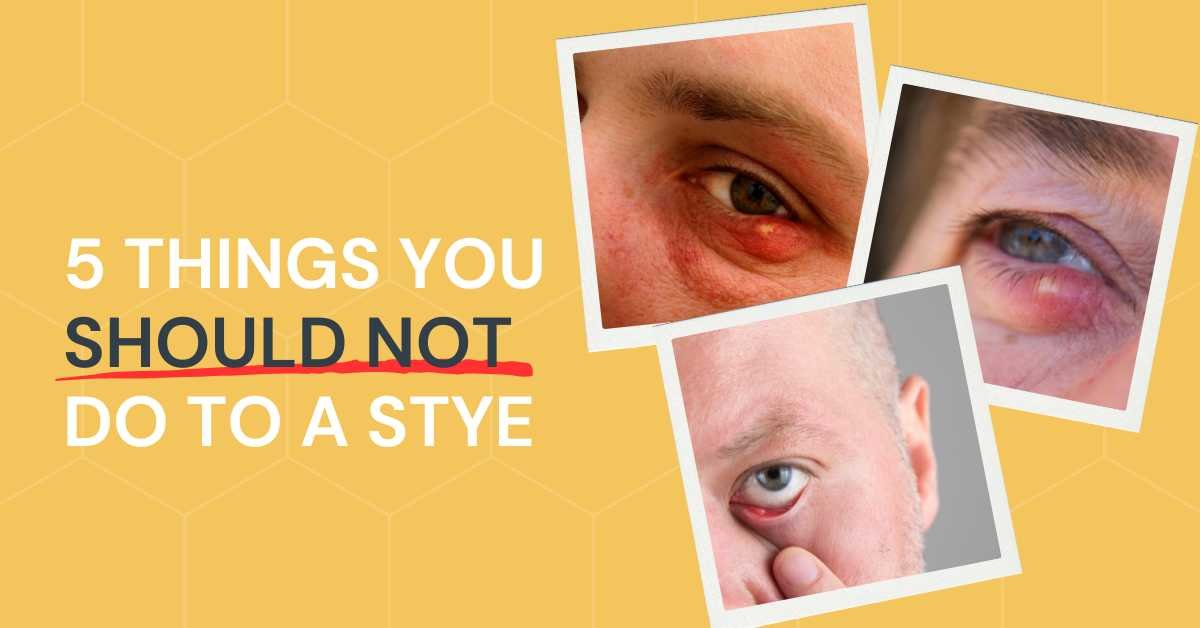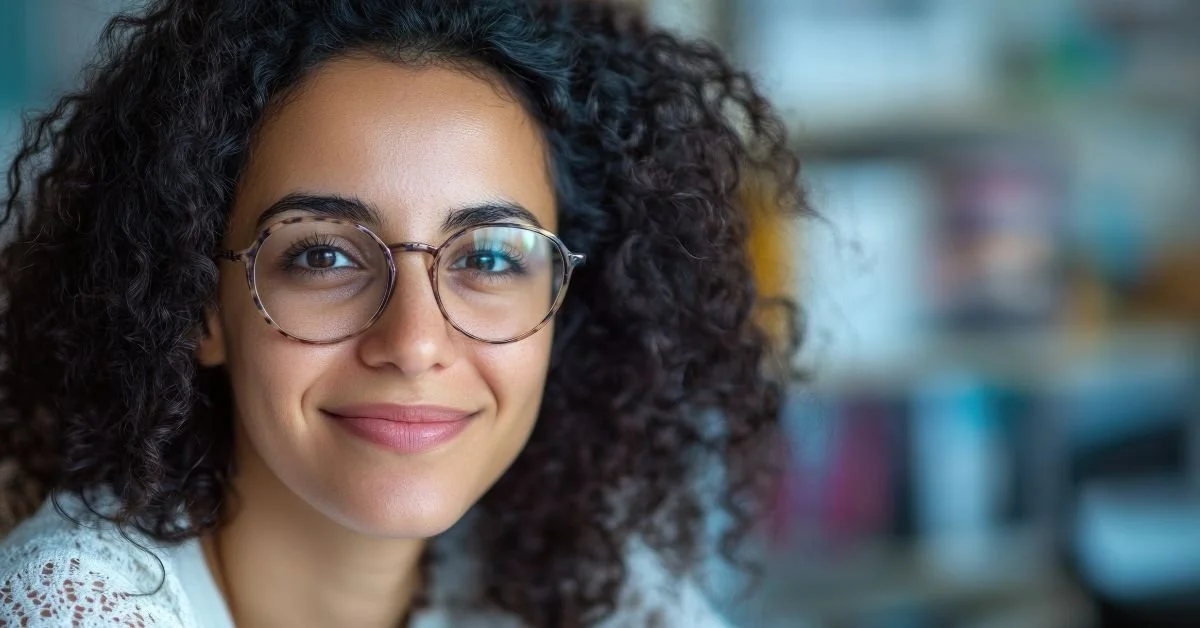How to Get Rid of a Stye Fast.
If you've ever had a stye, you know how frustrating it can be. A stye is a red, painful lump that forms on the edge of your eyelid. While they usually go away on their own within a few days, there are some things you can do to speed up the process. In this blog post, I'll share some treatments for getting rid of a stye fast.
What is a Stye?
A Stye, also called a hordeolum, is a bacterial infection of the sebaceous glands of the eyelid. While they are typically harmless, they can be unsightly and sometimes very uncomfortable.
Bacteria usually invade the gland through an opening in the eyelash follicle (external stye) or via the meibomian gland (internal stye). A stye can cause the surrounding eyelid area to become red and swollen. It can also be tender to the touch and may secrete discharge or pus. Depending on the location, a stye can cause your whole upper eyelid to swell closed or spread down your lower cheek.
People always ask us, why do I suddenly have a stye?
90-95% of styes or hordeolum are caused by Staphylococcus Aureus bacteria, while Staphylococcus Epidermidis usually cause the remainder. These are very common bacteria that lead to many common skin infections. Knowing this though, can help your eye doctor prescribe the appropriate antibiotics if they’re required.
Most people will experience 1 to 2 episodes of getting a stye in their lifetime, with the highest incidence being between the ages of 30 to 50. Usually, you will only get a stye on one eye. Still, we've seen multiple examples where people have 3-4 styes at a time on one eye or styes on both eyes. Most styes don't reoccur, but they can seem to reappear in the same spot. If this occurs, it's a good idea to book an appointment with your optometrist to ensure there isn't another problem.
Most styes resolve within a week or two without treatment. However, severe or recurrent styes may require topical and oral antibiotics.
Sometimes the initial red, painful lump will mostly resolve, leaving you with a hard pea-like lump in your eyelid. This lump is a chalazion and may need to be surgically removed or treated with a localized injection.
Are Styes Contagious?
Styes are generally not contagious, so it is safe for a child to attend school or for individuals to go to work. Styes are localized infections or inflammations of the eyelid's oil-producing glands and are not easily transmitted from person to person through casual contact. However, it's still advisable to maintain good hygiene practices to prevent any potential spread of bacteria. Encourage your child to avoid touching or rubbing their eyes, wash their hands regularly, and refrain from sharing personal items.
So How Do You Get Rid of a Stye Fast
Even though most Styes are harmless and will slowly resolve on their own in a week or two, who wants to wait that long? Thankfully, we'll share a few eye doctor tricks to help speed the process along.
5 Things You Should Do to a Stye.
Remove Your Makeup.
The number one thing you can do is thoroughly clean your eyelid area. Trapped bacteria causes most styes on your eyelids, so you want to remove any excess bacteria or anything that traps bacteria against your skin or blocks your pores. This includes makeup, eyeliner and mascara.
Eyelid Scrubs.
Optometrists and ophthalmologists previously recommended cleaning the eye area with diluted baby shampoo. We no longer do this and instead recommend eyelid cleaning products specifically designed to treat eyelid bacteria. These products are more effective and have less stinging and burning. They are also part of a great daily eyelid cleaning routine which can help prevent styes from developing in the first place, while keeping your eyelashes healthy and full.
Our favourite products are I-lid ‘n lashes, and Blephaclean (you can purchase them in our clinic - without a prescription), but over-the-counter products such as Systane Lid Wipes can also work.
We also recommend general eyelid cleaning sprays such as I-Lid ‘n lashes HOCL (also available in our clinic) cleaning spray. These sprays can gently clean the entire eyelid area and are a good solution for small children or people that hate using things around their eyes.
Remove your Contact Lenses.
Although contact lenses don't cause styes, it's a good idea to throw them away and wear your eyeglasses until the eyelid infection has cleared up. Because styes contain bacteria, this can contaminate your contact lenses, leading to a secondary eye infection.
If you have an internal stye, the stye may also rub on your contact lens, which can dislodge your lens or cause further surface irritation to your eye or a corneal abrasion.
If you need to wear your contact lenses, then it’s best to book an eye exam with one of our optometrists to ensure that it’s not going to cause any problems.
Warm compresses. #1 TREATMENT
Most people don't do them that well though. Styes are like pimples; we need it to get to a whitehead if it's going to drain. Warm compresses help increase the blood flow to the stye, enabling your immune system to handle the infection.
Warm compresses are the quickest, safest and best way to get rid of a stye fast.
The problem with warm compresses is that they will temporarily make your stye look worse, which is why no one likes doing them. Increasing blood flow to the area will temporarily make your stye look larger, redder, and even more tender.
Although warm compresses for a stye can be done with a warm towel, we think the best way is with a Bruder Mask. Bruder Masks are special eyelid pads used to heat and open up your meibomian glands. They’re unique in that they produce warm moist heat, which is similar to using a warm washcloth, but produces a more consistent even heat release.
Read Our Blog Post: How to Use Your Bruder Mask
To use a Bruder Mask simply place it in the microwave for 10-20 seconds or until it’s slightly warm to the touch. Then place the Bruder mask over your eyes and let the moist heat work it’s magic. The pro tip is to only wear it over top of the affect eye, so you can keep going about your day.
Where Can You Buy a Bruder Mask?
Bruder Masks are not currently sold in stores, and are usually only sold through your eye doctors office. You can stop by our clinic and pick one up, there is no need to make an appointment, and you don’t need to be one of our patients.
Alternatively, you can also purchase them online at Amazon.ca, or Eyecart.ca
Lid Massage.
After doing a warm compress for 5-10 minutes, you need to gently massage overtop of the stye with your finger. This light massage helps to break down the edges of the stye so the body can't build a fibrous membrane around it. This allows your immune system to better attack the infection and speeds up the healing process.
5 Things That You Should Not Do to a Stye
Ignore it.
You should never ignore a stye. A stye is an infection, and like all infections, it needs to be treated promptly to prevent complications. By following the above treatment recommendations, you can prevent a stye or hordeolum from becoming a chalazion, which requires surgical removal. Although most styes will resolve on their own, speeding up the process is a good insurance policy.
Try To Pop It.
First and foremost, resist the urge to pop your stye. This will only spread the infection and make the stye worse. If you've already tried doing this, and your eyelid is now red and irritated, we strongly recommend booking an appointment to see one of our optometrists. You will likely need to be placed on oral antibiotics to prevent a more extensive cellulitis infection.
Use a Tea Bag.
Some people believe that using a tea bag to treat a stye can help to reduce the swelling and speed up the healing process. However, there is no scientific evidence to support this claim. Although a tea bag works on the same principle as a warm compress, the heat just doesn't last long enough to effect change. Also, the acidic nature of the tea can sting your eyes.
Drugstore Antibiotic Drops & Ointments.
There is little evidence demonstrating a benefit from topic antibiotic ointments and creams. Using over-the-counter products like Polysporin or prescription products like erythromycin ointment is more aimed at controlling bacterial levels around the infection. Antibiotic drops and ointments won't, however, make the stye go away any faster.
Avoid Wearing Makeup.
Applying makeup over or near a stye can irritate it further and introduce bacteria to your makeup and delay the healing process.
7 Signs You Should See an Optometrist for a Stye.
You should see one of our eye doctors right away if:
Your stye doesn't get better after a few days.
Your stye gets worse.
You develop a fever (38 Celcius or 100.4 Fahrenheit)
Your eye hurts to move
Your vision seems blurred
Your stye returns to the same place
Your stye is bleeding
Styes don't usually require a trip to the emergency department unless the infection has spread and has caused a broader cellulitis infection. Optometrists are the best suited to handle these common annoying eyelid infections.
In Alberta, seeing an optometrist for a stye is considered a medically necessary service and is covered by Alberta Health Care. So if you're concerned, please book an emergency eye exam with one of our optometrists.
Our eye doctors can confirm the diagnosis, review the best treatment options, and prescribe topical or oral antibiotics. We’ll also rule out other possible causes such as basal cell carcinoma, chalazion, preseptal cellulitis, sebaceous gland carcinoma, or squamous cell carcinoma.
You can find our optometry clinic located on 149th Street, anchoring the West Edmonton communities of Crestwood, Parkview, Jasper Park, Sherwood.
Have you Ever Experienced a Stye?
Leave us a comment below and let us know if you’ve ever suffered from a Stye and how you treated it.












